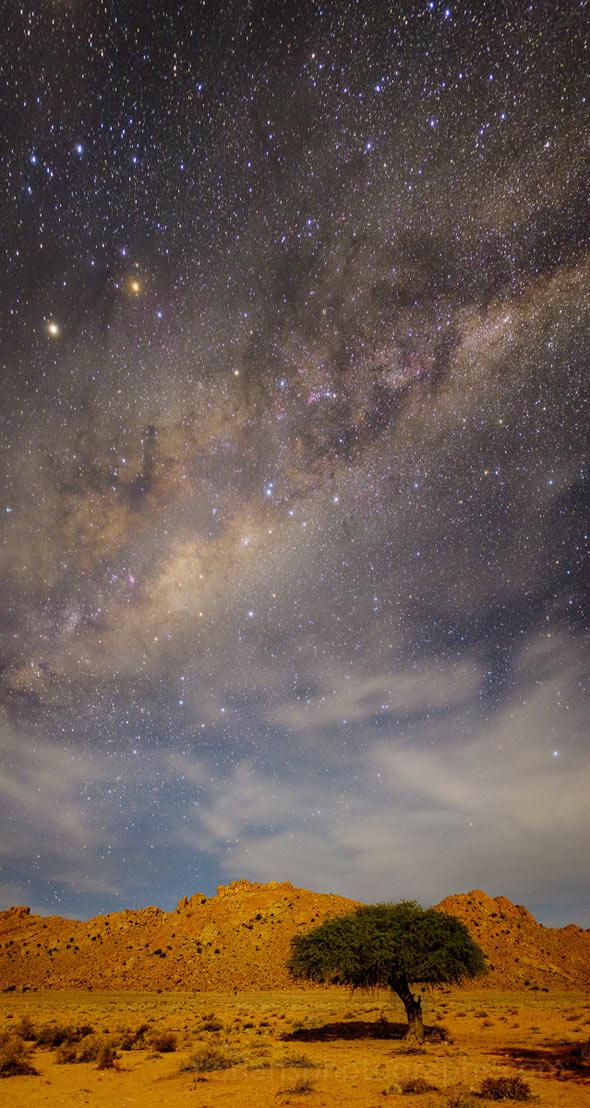Our planet is gifted with a lovely atmosphere of nitrogen and oxygen, which does a terrific job of keeping us alive.
It also provides us with a very common metaphor: “Different as day and night”. And they are; during the day, sunlight passing through our atmosphere gets scattered—blue more than any other obvious color—making the sky itself appear to be blue and very bright. Contrast that with the black sky at night, dark enough that we see stars. They’re there during the day, too, but the scattered sunlight is so strong and so bright that it washes out the stars.
So how can the photo above show what looks to be the Milky Way and thousands of stars over a daylit scene?
Because it doesn’t. Yes, that’s the Milky Way, and yes, those are myriad stars, but no, it’s not daylit. It’s moonlit!
The photo was taken by photographer Florian Breuer in Namibia on June 10. It was a few hours after sunset, with the crescent Moon low in the sky. He took four 30-second exposure photos and stitched them together to make this panorama; the phenomenal dark and clear southern Africa skies allowing the glow of the stars and our home galaxy through. But the low Moon was also bright enough that, in the long exposures, the landscape was illuminated, and the tree even cast a shadow!
This is not at all how your eye sees the scene were you there, but cameras work differently than our eyes. This is something I wish more people understood; when you take a photo of something you are automatically changing how it’s seen. Colors, brightnesses, perspective, and much more are recorded in ways that alter them. So while this image may look fake, it’s not. At least, it was photographed faithfully to the scene (with minor contrast adjustments), but it’s not how it would look to us standing there.
But nothing is. This is a very important lesson in life, one I iterate whenever I post an optical illusion or eyewitness account of some oddity, but it bears repeating here, too: What you see is almost never what you get.
But that doesn’t make shots like this any less real, or any less beautiful. Breuer took a lot of photos in Namibia, and trust me, you should take a look. Our world is packed with beauty, and sometimes it takes a camera’s—and photographer’s—eye to show it to us.
